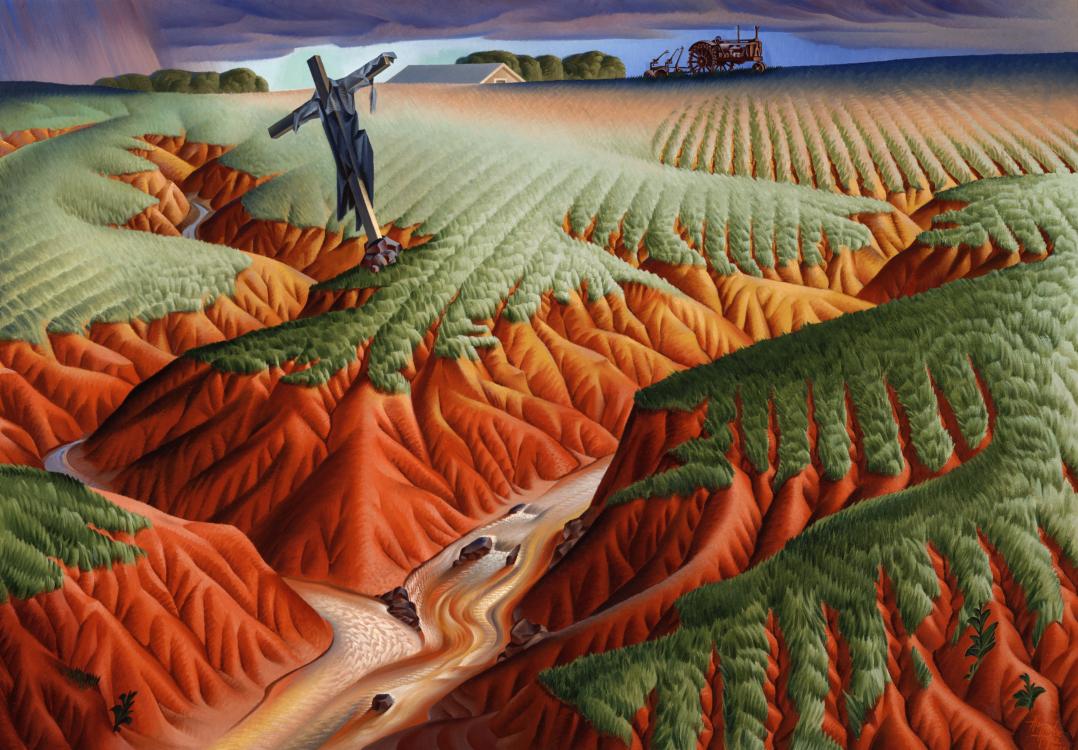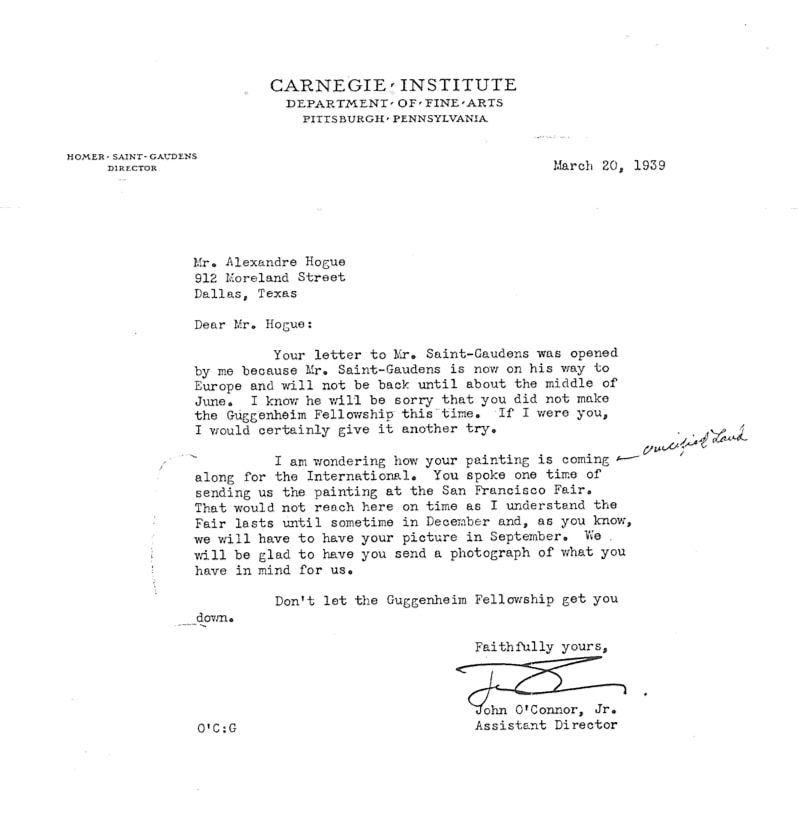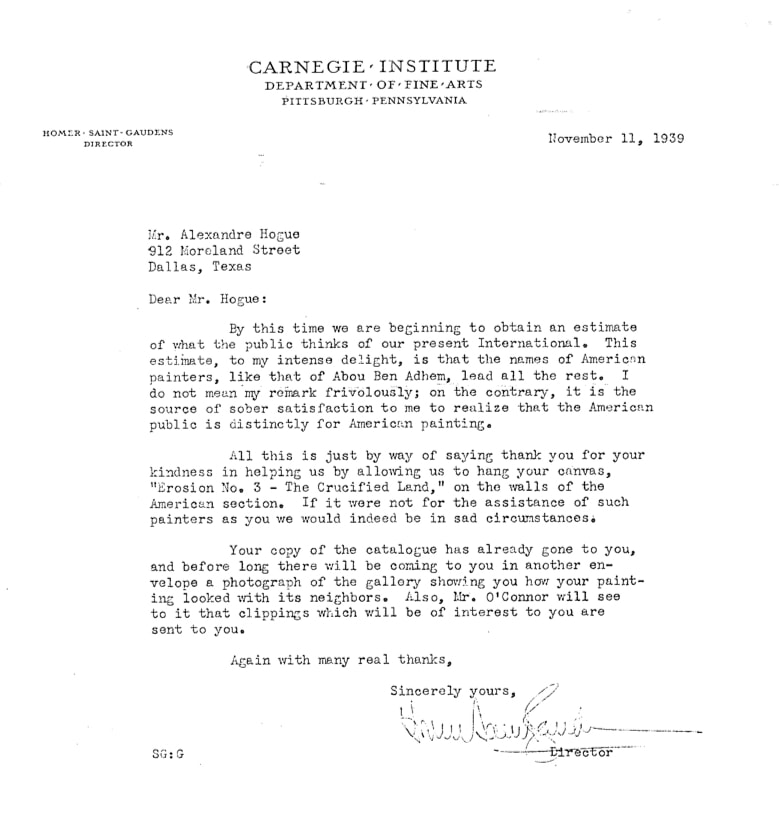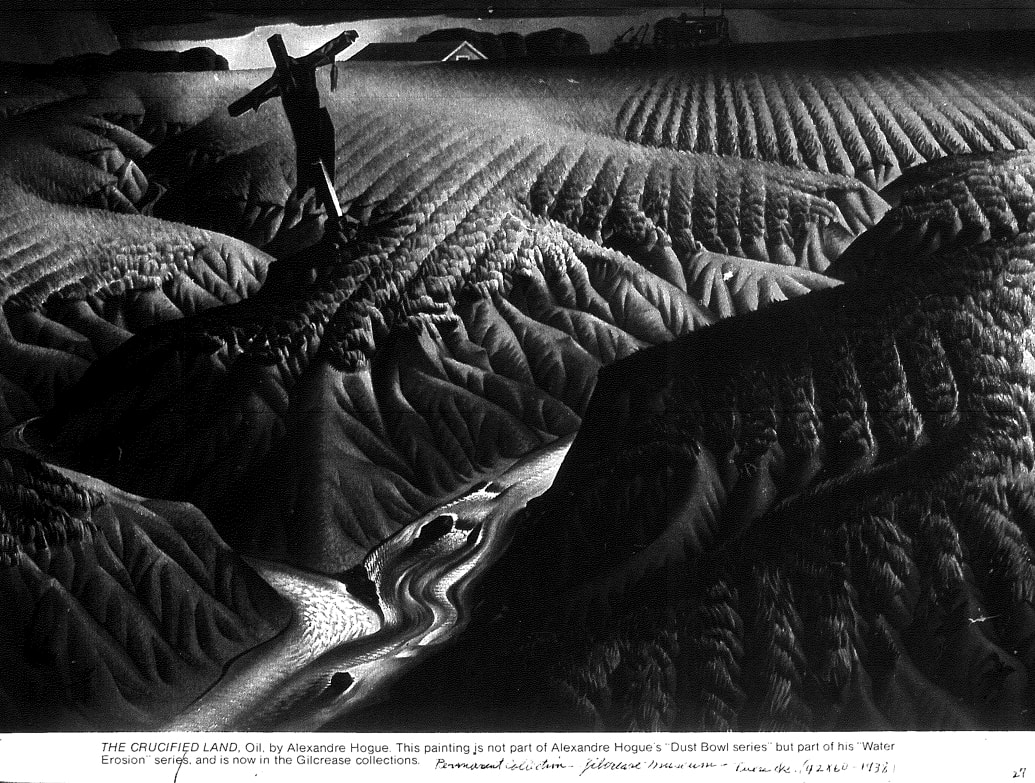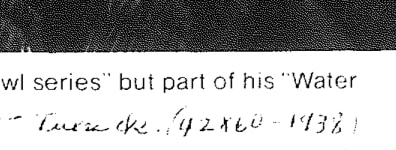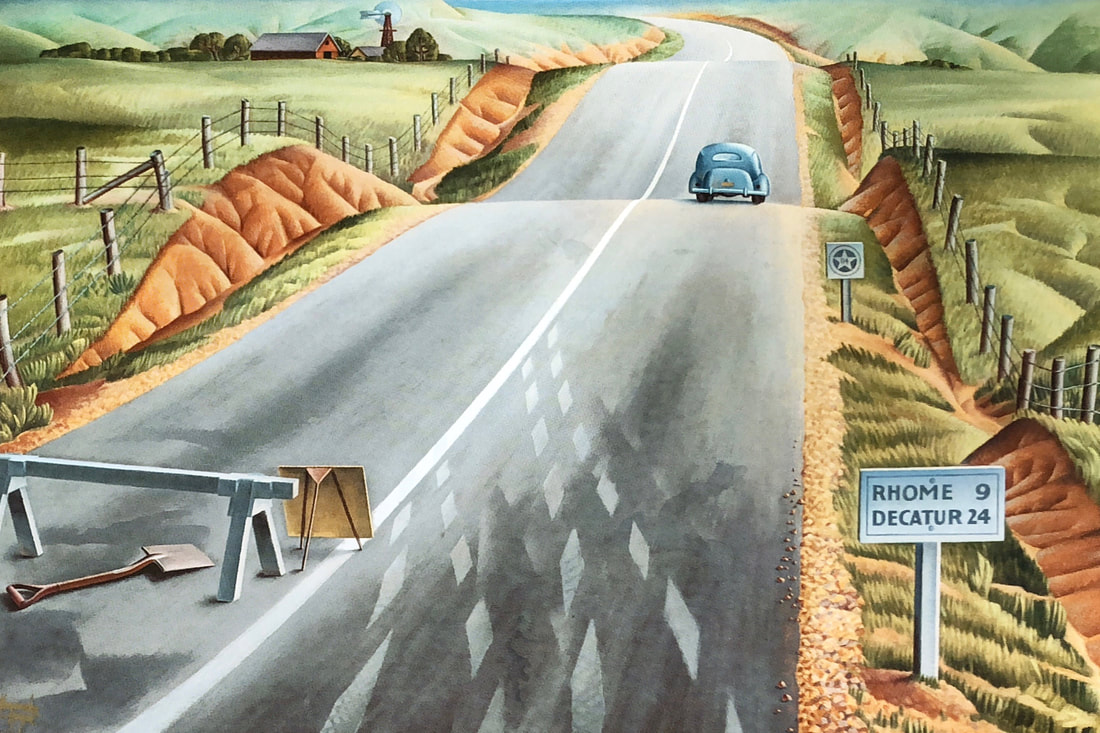|
The Crucified Land was completed by Alexandre Hogue in 1939 as his third piece on the effects of water erosion during the Dust Bowl (Figure 1). In this painting, Hogue used red soil to symbolize how water can cut into the skin and flesh of the earth, leaving the soil exposed and eliminating its ability to provide life. His goal in this piece, through the tractor in the background, was to draw attention to the crimes committed by farmers against the soil during the Dust Bowl. The religious symbolism of the cross highlights the devastating price that was paid as a result of recklessness and improper care of the earth. Figure 1. Alexandre Hogue, The Crucified Land, 1939, Gilcrease Museum. The first mention of The Crucified Land was in a letter from John O’Conner to Alexandre Hogue on March 20, 1939 (Figure 2). In this letter, O’Connor asked Hogue about his progress on his new painting for the 1939 International at the Carnegie Institute. The painting will turn out to be The Crucified Land. Figure 2. Alexandre Hogue, letter from John O’Connor to Alexandre Hogue, March 20, 1939. Archives of American Art, Smithsonian Institution, Reel No. 1480. On November 11, 1939, Hogue received a thank you letter from Saint Gaudens of the Carnegie Institute for allowing his painting The Crucified Land to be exhibited in the 1939 International (Figure 3). Figure 3. Alexandre Hogue, letter from Saint Gaudens to Alexandre Hogue, November 11, 1939. Archives of American Art, Smithsonian Institution, Reel No. 1480. When donating his letters to the Smithsonian Archives of American Art in 1979, Hogue included photographs of his paintings where he gave a brief description. Although Hogue was in the process of painting The Crucified Land in March of 1939, Hogue backdates this painting to 1938 (Figure 4). Figure 4. Alexandre Hogue, “Description of paintings,” 1979. Archives of American Art, Smithsonian Institution, Reel No. 1482. Although The Crucified Land is displayed alongside the correct 1939 date in the Gilcrease Museum and in the book Alexandre Hogue: An American Visionary (Texas A&M University Press, 2011), Hogue's 1979 description of The Crucified Land in the Smithsonian Archives is another example of Hogue inaccurately dating his own work. Whether Hogue’s backdating of this painting was intentional or not, this 1979 description is evidence of Hogue’s inconsistent dating of his Dust Bowl paintings. Russell Tether, President Katherine Hillman, Associate Russell Tether Fine Arts Associates, LLC
Comments are closed.
|

